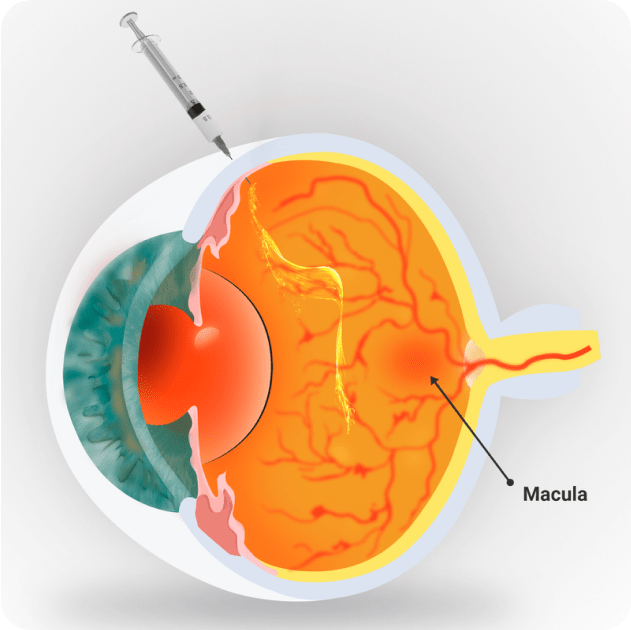
What is Intravitreal Injection?
An intravitreal injection is a procedure where medication is directly injected into the vitreous, a gel-like substance in the eye. It is commonly used to treat eye conditions like macular degeneration, diabetic retinopathy, ocular inflammation and retinal vein occlusion. The injection is usually performed in an Ophthalmologist’s office.
Before the injection, several anaesthetic eye drops are used to numb the eye. This helps minimise any discomfort and pain during the procedure.
The eye is rinsed using an antiseptic solution to reduce the risk of infection.
The eye surgeon will use a special instrument called a speculum to hold the eyelids open and ask the patient to look down. The medication is then quickly injected into the white part of the eye using a very fine needle.
After the injection, any remaining antiseptic solution is rinsed out of the eye with saline. Depending on the situation, the eye may or may not be covered with a patch for a few hours.
Intravitreal injections are generally considered safe, being one of the most common and safest procedures in ophthalmology. However, like any medical procedure, there are potential risks and complications.
The risk of a serious complication following intravitreal injection is extremely rare and includes increased eye pressure, retinal detachment, and infection.
It is important to report any concerning symptoms to your retina specialist or their staff after the procedure, especially if you experience flashes, an increase in floaters, severe redness, severe pain, or a significant decrease in vision. Most side effects and complications can be managed or resolved spontaneously, but timely evaluation and treatment are necessary to prevent or treat serious complications.
Ensuring you attend all your appointments with your eye specialist is crucial, even if your vision seems fine. Missing appointments can result in the reactivation of your condition, potentially leading to irreversible vision loss without the necessary injections.
To maintain a clean and sterile environment, it is advisable to avoid using eye makeup on the day of the injection.
Unless instructed otherwise by your doctor, continue using your regularly prescribed eye drops on the day of the injection. This helps maintain consistent management of your eye condition.
For added protection and comfort after the injection, remember to bring sunglasses with you. They will shield your eye from light sensitivity as you leave the clinic or hospital.
Immediately after the injection you may notice small blobs or specks floating in your vision. These are often caused by the medication or tiny air bubbles and usually resolve on their own within a few hours.
It is common to experience mild discomfort, foreign body sensation, and redness for a day or two following the injection. Patients are given lubricating eye drops to use for a few days to relieve any superficial discomfort.
Your eye specialist will schedule follow-up appointments to monitor your progress. These appointments are crucial to evaluate the effectiveness of the treatment and determine if further injections or adjustments are necessary.
It’s important to contact your eye specialist if you experience severe or persistent pain, a sudden decrease in vision, swelling, or any other concerning symptoms following the injection.
